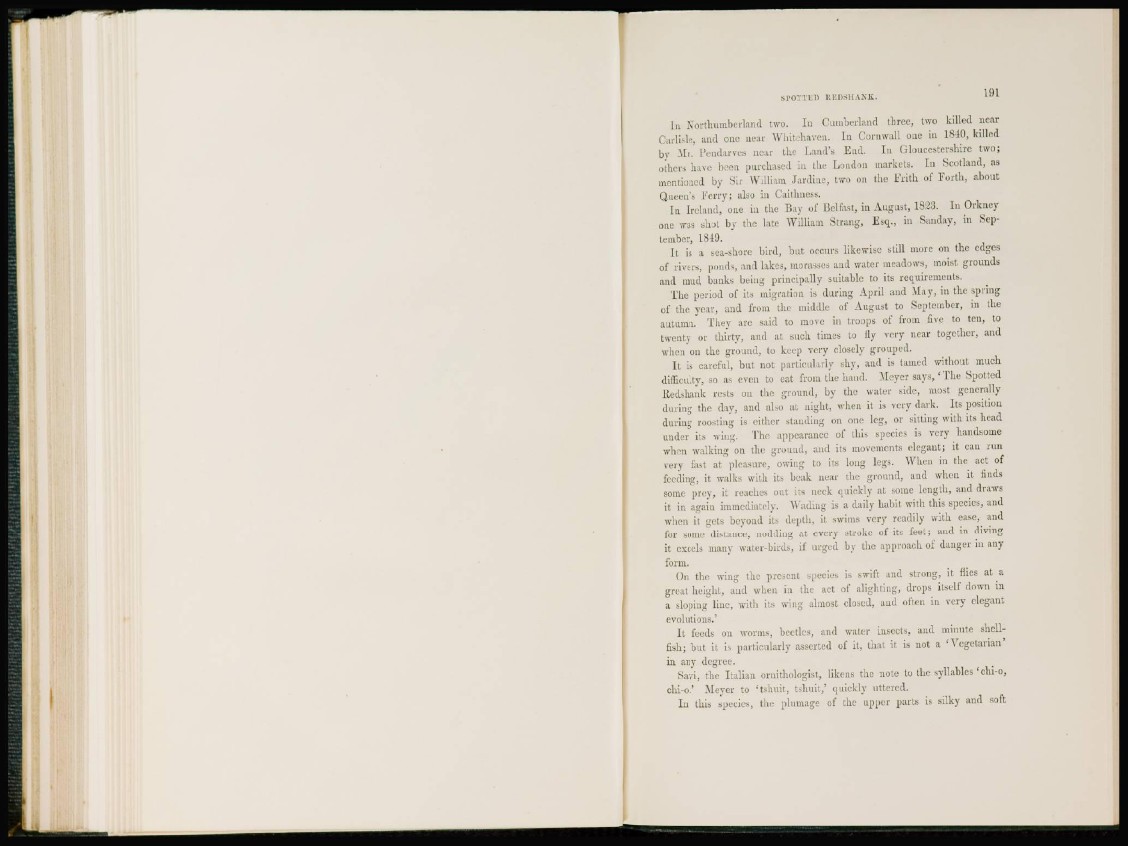
SPOTTED REDSHANK. L91
[n Northumberland two. In Cumberland three, two killed near
Carlisle, and one near Whitehaven. In Cornwall one in 1840, killed
by Mr. Pendarves near the Land's End. In Gloucestershire two;
others have been purchased in the London markets. In Scotland, as
mentioned by Sir William Jardiuc, two on the F r i t h of Forth, about
Queen's Ferry; also in Caithness.
I n Ireland, one in the Bay of Belfast, in August, 182-3. In Orkney
one was shot by the late William Strang, Esq., in Sanday, in September,
1849.
It is a sea-shore bird, but occurs likewise still more on the edges
of rivers, ponds, and lakes, morasses and water meadows, moist grounds
and mud banks being principally suitable to its requirements.
The period of its migration is during April and May, in the srjring
of the year, and from the middle of August to September, in the
autumn. They are said to move in troops of from live to ten, to
twenty or thirty, and at such times to fly very near together, and
when on the ground, to keep very closely grouped.
I t is careful, but not particularly shy, and is tamed without much
difficulty, so as even to eat from the hand. Meyer says, ' The Spotted
Redshank rests on the ground, by the water side, most generally
during the day, and also at night, when it is very dark. Its position
during roosting is either standing on one leg, or sitting with its head
under its wing. The appearance of tins species is very handsome
when walking on the ground, and its movements elegant; it can run
very fast at pleasure, owing to its long legs. When in the act of
feeding, it walks with its beak near the ground, and when it finds
sonic prey, it reaches out its neck quickly at some length, and draws
it in again immediately. Wading is a daily habit with this species, and
when it gets beyond its depth, it swims very readily with ease, and
for some distance, nodding at every stroke of its feet; and in diving
it excels many water-birds, if urged by the approach of danger in any
form.
On the wing the present species is swift and strong, it flics at a
great height, and when in the act of alighting, drops itself down in
a sloping line, with its wing almost closed, and often in very elegant
evolutions.'
I t feeds on worms, beetles, and water insects, and minute shellfish;
but it is particularly asserted of it, that it is not a * Vegetarian'
in any degree.
Savi, the Italian ornithologist, likens the note to the syllables 'chi-o,
chi-o/ Meyer to 'tshuit, tshuit,' quickly uttered.
I n this species, the plumage of the upper parts is silky and soft